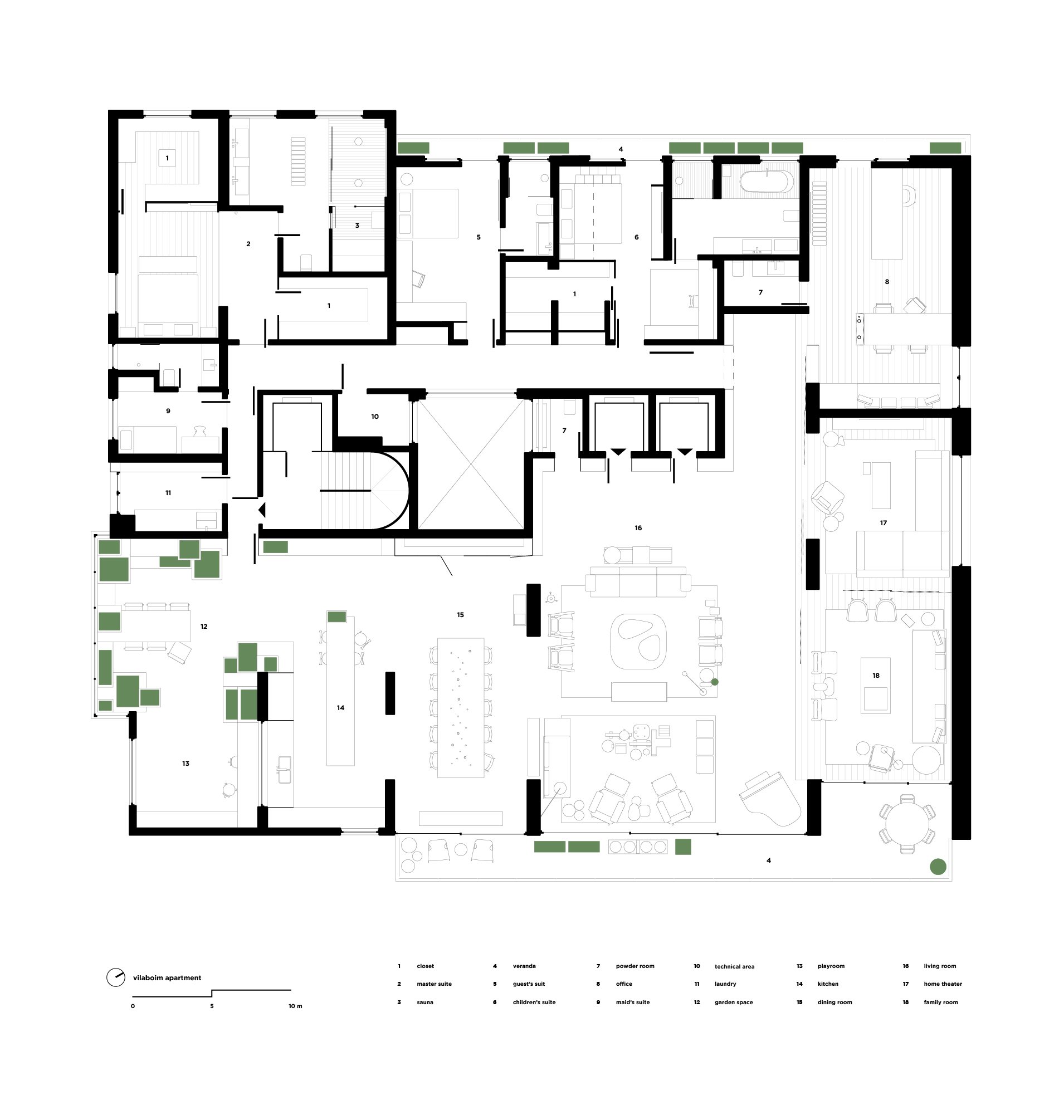Project Description
Vilaboim Apartment
Technical Data
Location: São Paulo, SP – Brazil
Type of construction: Apartment renovation
Building area: 617m²
Project beginning: 2019
Construction completion: 2022
Team
Authors: Fernando Forte, Lourenço Gimenes, Rodrigo Marcondes Ferraz
Creative director : Gabriel Mota
Managers: Desyree Niedo, Guilherme Prado, Juliana Cadó
Coordinator: Iacy Gottschalk
Contributors: Bruno Suman, Carolina Hirata, Eduardo Vale, Gilberto Sales, Gustavo Hohmann, Larissa Sartori, Letícia Gonzalez, Lucas Lima, Pedro Ocanhas, Victor Lucena, Vitória Colsato
Interns: Ana Paula Sapia, Flávia Moura, Giovanna Custódio, Henrique Dias, José Carlos Navarro, Matheus Soares, Michelle Vasques, Rafael Mourão
Photographer: Fran Parente
Constructor: RMR
Landscape designer: Juliana Freitas
Lighting design: FOCO (project) LIS (construction)
Suppliers: Parket, Dimármore, Banho Mais, Liscorp, Primo Vidros, Logitec, Inovar, Atenua Som e JC Marcenaria, Tresuno e Protécnica, Carvalho e Carvalho, Padrão Móveis e Brera/Mekal, DM Irrigação, Futura, N Didini, LCM, BBlock, Botteh, Tapetah, Uniflex, Atelier ZHZ.
Located in a memorable building in the neighborhood of Higienópolis, from 1969, the apartment of about 600m2 was chosen by the owner with the help of FGMF. The property, although well cared for, had not undergone changes since the reform of the former residents in 1978, almost 45 years before the current intervention.
The renovation of the apartment would be profound in terms of space and facilities.
The family program, consisting of a couple with a pre-teen daughter, was reasonably simple considering the dimensions of the property – guest bedroom, couple’s and daughter’s bedrooms, integrated living rooms, office and a comfortable space for the family piano.
We initially developed several variations of layout to understand and discuss among all the various possibilities of arrangement of the plan, especially the intimate area, to then deal with a cohesive architectural part that tied the overall organization, finishes and interiors of the apartment.
The elimination of the large entrance hall and suppression of several original walls provide a vast and integrated living room with kitchen and dining room with full view of Buenos Aires Square.
There is, in the building, a kind of “core” composed of social elevators, toilet, service circulation and central ventilation and lighting well. The main circulation of the apartment occurs naturally around this central “core”, and because of the importance of this element in everyday life, we began to think about the composition of materials of the place by this element, coating it with greenish patinated copper plates. Between the plates, thin metal plates anchored to the walls and inserted between the copper plates become a bookcase that runs through the social and service area, organizing the doors of elevators, toilet, encompassing the wine cellar and becoming a support furniture of the kitchen area.
A large wooden element, with unevenness, as a “volume within the apartment space” was designed to organize office, TV room and intimate room for the daily life of the family. This volume, fully clad in oak, has sliding doors in Freijó muxarabi that can be fully opened or closed depending on the occasion and create an everyday dynamic that changes the appearance of the social area.
The rest of the social area, kitchen and multipurpose space is finished in basalt plates that surround the pillars and protrude from the floor creating volumes with landscaping that embrace the dining room. These volumes also arrange the large open central island of the kitchen which is finished with planned stainless steel furniture.
The apartment furniture was established primarily as a kind of beginning of collection for the owners, almost all of them of Brazilian design, from modernists to contemporaries. We established an organization for different spaces; for social living, in basalt and more austere we seek to use wooden furniture and avoid furniture with a more industrial aspect, already in intimate being, wrapped in wood flooring, more upholstered and comfortable furniture.
All environments relate furniture designs with decades of difference, such as Mole armchairs by Sergio Rodrigues with furniture by Bittencourt or FGMF itself, or Zalszupin’s ondine and Adriana armchairs with sofa designed by Marcus Ferreira and Guilherme Wentz.
Some pieces were also created by the architects especially for this project, such as the marble coffee table of the intimate room or the Crest sideboard, all in cast glass, for specific project locations. Secondary layers such as luminaires, objects and compositions followed the same reasoning, as it is possible to observe on the coffee table composed of traditional Brazilian stools in a kind of artistic-functional installation.
The result of the project is a very integrated space, fluid, with materials and furniture that we consider timeless for a perennial project, but that houses layout changes with ease without losing the general characteristics of the intervention. A house that is not tied to fads and ages worthily, in the same way as the wonderful building in which it is inserted.


